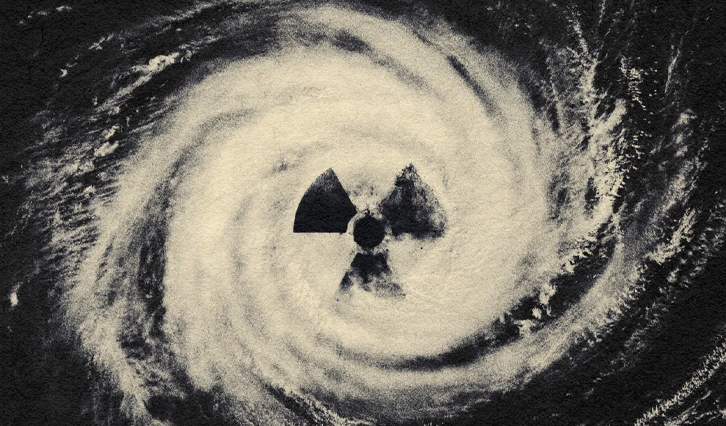How to survive the new nuclear age
Center for Nuclear Security Policy Director Vipin Narang and Senior Nuclear Fellow Pranay Vaddi examine the multiplying threats and emerging challenges in today’s evolving nuclear order.
Center for Nuclear Security Policy Director Vipin Narang and Senior Nuclear Fellow Pranay Vaddi examine the multiplying threats and emerging challenges in today’s evolving nuclear order.

Radiation symbol in a hurricane.
In 2009, when U.S. President Barack Obama came into office, nuclear weapons looked increasingly superfluous. As the Cold War faded into history, Moscow and Washington, the world’s two nuclear superpowers, had long been working together to reduce their arsenals. At the same time, after years of protracted conventional wars in Afghanistan and Iraq and the broader “war on terror,” the U.S. defense establishment was far more preoccupied with counterterrorism and counterinsurgency than with nuclear strategy and great-power rivalry. The notion that any other country would attempt to reach nuclear parity with Russia and the United States seemed far-fetched, and American leaders were all too happy to delay an expensive refurbishment of the aging U.S. arsenal. So strong was the consensus that nuclear arms were a relic of a previous era that four top former national security officials—Henry Kissinger, George Shultz, Sam Nunn, and William Perry, not one of them a dove—publicly called for “ending” nuclear weapons “as a threat to the world.”
A decade and a half later, things could not be more different. The United States now faces a Category 5 hurricane of nuclear threats. After decades of maintaining only a minimal nuclear capability, China is on pace to nearly quintuple its 2019 stockpile of some 300 nuclear warheads by 2035, in a quest to attain an arsenal equivalent in strength to Russia’s and the United States’. Far from being a partner in arms reductions, Russia is using the threat of nuclear weapons as a shield for its aggression in Ukraine. Meanwhile, North Korea continues to expand its arsenal, which now includes missiles capable of hitting the continental United States. Iran is closer than ever to producing a nuclear weapon. And in May, the world witnessed India and Pakistan, two nuclear-armed powers, strike each other’s heartlands with conventional weapons in the aftermath of a terror attack, a confrontation that—already unprecedented—could have escalated to a nuclear standoff.
These multiplying threats have not just brought nuclear strategy back to the center of U.S. defense concerns; they have also introduced new problems. Never before has the United States had to deter and protect its allies from multiple nuclear-armed great-power rivals at the same time. Like Russia, both China and North Korea may integrate nuclear weapons into offensive planning, seeking a nuclear shield to enable conventional aggression against nonnuclear neighbors. Moreover, there is a growing possibility that two or more nuclear powers—for example, China and Russia, or North Korea and Russia—might try to synchronize military aggression against their neighbors, stretching the U.S. nuclear deterrent beyond its means. Finally, the rapid erosion of nuclear guardrails, the diplomatic architecture that has for decades limited proliferation and brought security to dozens of countries under the U.S. nuclear umbrella, has pushed some Asian and European allies to consider acquiring their own nuclear weapons. All this has happened in an era in which the United States’ antiquated nuclear arsenal has fallen into disrepair, with ongoing modernization efforts mired in delays and rampant cost overruns.
This coming nuclear hurricane poses far-reaching challenges. For the first time since the end of the Cold War, Washington will need to develop more, different, and better nuclear capabilities and begin to deploy them in new ways. Given the scale of the problem, nuclear concerns can no longer be treated as a niche issue managed by a small community of experts. Officials at the highest levels of government will need to incorporate them into core defense policy in each of the major theaters of vital interest to the United States: Europe, the Indo-Pacific, and the Middle East. At the same time, Congress will need to back an accelerated effort to overhaul the U.S. arsenal with significant funding and give the project urgent priority, to be able to address not just today’s changing threat environment but tomorrow’s as well. Above all, for the United States to effectively handle a highly volatile and quickly changing nuclear order, nuclear affairs must once again become a central part of American grand strategy.